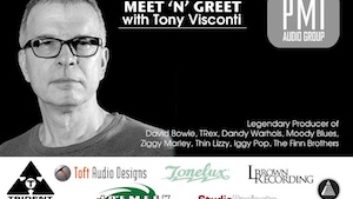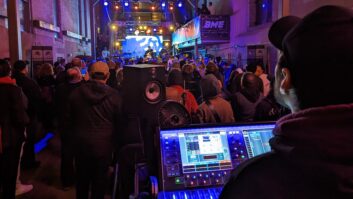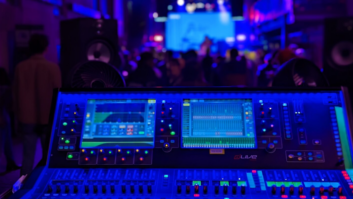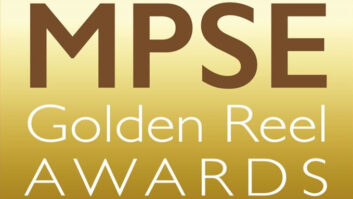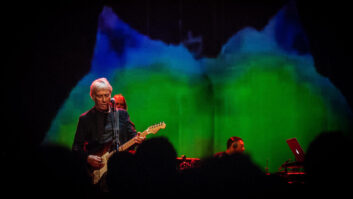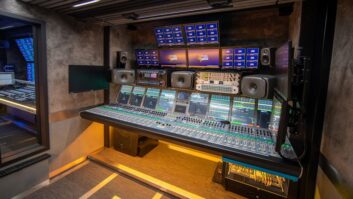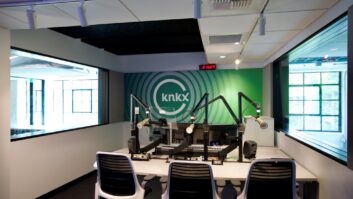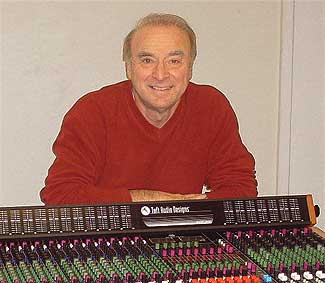
Malcolm Toft
Tell us about your early career as an engineer.
I was a recording engineer at [London’s] Trident studios when it opened its doors [in 1967], and prior to that I was with CBS Studios as an engineer. I worked with Tony Visconti and recorded three albums with T-Rex, which Tony produced, engineered James Taylor’s first album and David Bowie’s Space Oddity album, and was lucky enough to have worked on the mixing of “Hey Jude” by The Beatles, which was recorded at Trident studios. It was a great place to be at the right sort of time; there was a whole lot of stuff going on at Trident. My approach as an engineer was always, as an analogy, like a race-car driver: If you want to get the best out of a car, you have to know a bit about the mechanics. I felt if I could understand what headroom is, what signal-to-noise ratio and equivalent input noise are, I can better record.
How did you progress into console design and manufacturing?
I’ve always been interested in what went on under the hood. From about my early teens, I’d built little consoles and messed around, always interested in putting stuff together. I always thought my career path would be that I’d end up some day owning my own studio. To do that, I had to get equipment, so I built my own.
Around 1970, I became [Trident’s] studio manager, and we needed a new console for the move up to 24-track. We weren’t happy with the second console from Sound Techniques, who supplied the first couple of consoles at Trident. So we researched the market, and at that time there were three major players: Neve, Cadac and Helios. We didn’t like the ergonomics of the Helios, and the Cadac was way too big to fit in our control room. After a meeting with Neve, I was with Barry Sheffield, one of the owners of Trident, and he asked me what did I think. I said, “I don’t think we’re going to get what we want from Neve.”
So I asked, “What about we build our own?” I said I’d been dabbling around and we had this tech at Trident named Barry Porter who had been helping me design a mixer. So I said, “We’ve got Barry on staff, I know all the systems and engineering, we’ve got good engineers; surely between all of us we could design a console.” After various meetings, they said to me, “If you’ll manage the project, Malcolm, we’ll give you a year and room at Trident and Barry to design a console.” When you think back on it, I was 26 years of age, I had never designed anything really, and here we were building a 28-input, 24-bus super-console. It was just over a year to finish the first A Range console, and that was the start of Trident [consoles].
How did it grow from there?
While we were building the console, other people who used the studio got to hear about it. A friend of Roy Thomas Baker’s was a guy called Dave Grinstead, and I’d worked for a guy named John Kongos, and they were both building their own studios. So I went back to management and said we could have a couple of orders for consoles and why didn’t they start a console company. So we started Trident on the basis of a couple of orders that came in and we never looked back. In the first couple of years, we hardly had to advertise: It was word of mouth and the orders just kept flooding in. That’s how Trident started back in 1971 until I sold the company in the late ’80s.
How did Trident consoles come to America?
I remember going to my first AES [convention] when they were at the Waldorf Astoria in New York with an A Range module in a suitcase. I went to the show, had a look around, spoke to a few people and I had people banging on my door asking if I was the guy from Trident Studios in London who was making a console. I literally showed them this module and we got orders on the back of that. America really took Trident to their hearts very early on. We became probably better known in America than anywhere else.
I came up with the Series 80 in 1979, and that became a runaway success. We were in Nashville, New York — everywhere. It was a good rock ‘n’ roll console, and I designed it with a feature set of how I would want the console to be. The success of Trident really was based on the fact that it came from a company that was a recording engineer-based company. I knew what it was like working on a console at 3 in the morning and the talkback being in the wrong place and having to lean across the producer. When you’ve been working for 11 hours, stupid little faults become a major bug-bee.
What’s new that you’ve been working on?
As you’re probably aware, we got the Trident name back at the end of last year. We are launching as the first new Trident product: the original A Range EQ and mic pre that, as a tribute to Barry Porter, who passed away a few years ago, is absolutely built to the classic and original circuit diagrams. It’s a rackmount 2-channel unit that is basically the A Range turned on its side with a 4-band EQ, output level control and transformer in and out. Then there’s a new Trident console coming out that will be a turbo-charged Series 80, but again with features more in line with what today’s engineers want. We’re also going to be releasing a Series 80 B in rack form.
Kevin Becka is Mix’s technical editor.
